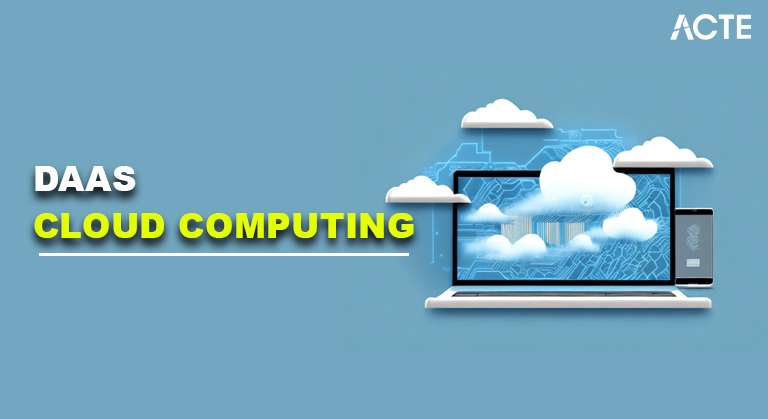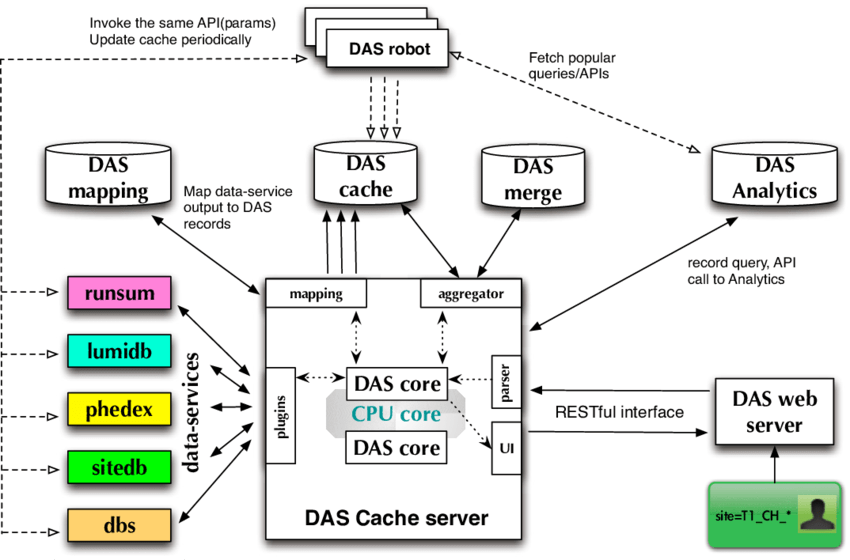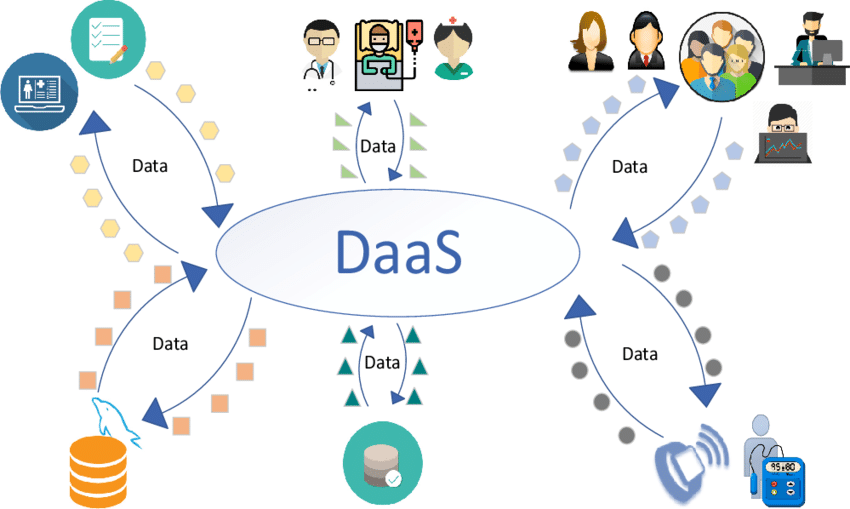
- Introduction to DaaS (Desktop as a Service)
- How DaaS Works in Cloud Computing
- DaaS Providers and Solutions
- Key Benefits of DaaS for Businesses
- Security Considerations in DaaS
- DaaS vs Traditional Desktop Virtualization
- Future of DaaS in Cloud Computing
- Use Cases for DaaS
- Scalability and Cost Management with DaaS
- Conclusion
DaaS in cloud computing is a structured strategy for identifying, evaluating, and mitigating security risks associated with cloud-based environments. It plays a crucial role in detecting potential weaknesses, threats, and vulnerabilities before they can be exploited. By leveraging proactive security strategies, organizations can strengthen their cloud infrastructure against emerging cyber risks, a key topic discussed in Cloud Computing Courses to help students understand how to implement effective security measures in cloud environments. This blog will explore DaaS in cloud computing, its significance, and how it can be effectively implemented. We will also delve into different methodologies, industry best practices, and essential tools that enhance security within cloud-based systems.
To Explore Cloud Computing in Depth, Check Out Our Comprehensive Cloud Computing Online Course To Gain Insights From Our Experts!
Introduction to DaaS (Desktop as a Service)
Desktop as a Service (DaaS) is a cloud computing solution that allows businesses to host and deliver virtual desktops to end-users. In a DaaS model, the operating system, applications, and data reside on virtual machines hosted in the cloud, and users access their virtual desktops over the internet from any device, anytime, anywhere. This model is part of the broader category of Desktop Virtualization, which decouples the desktop environment from physical hardware and delivers it as a service, similar to concepts covered in A Basic Guide to Computer Networks, where understanding virtualization and network infrastructure is crucial for efficient delivery and management of IT services. DaaS offers businesses a streamlined, scalable alternative to traditional desktop management by outsourcing the complexities of maintaining physical desktop infrastructure, software updates, and security management to third-party cloud providers. Users benefit from the ability to access a consistent, pre-configured desktop environment regardless of the device they are using, leading to enhanced mobility and flexibility.
How DaaS Works in Cloud Computing
DaaS operates in a cloud environment, where the desktop environment, including the operating system, applications, and user settings, is stored and managed.

- Provisioning: Users or administrators configure and provision virtual desktops through the DaaS platform. These virtual desktops can run Windows, Linux, or other OS images.
- Access: Once provisioned, end users access their desktops via thin clients, laptops, tablets, or other devices. The desktop runs remotely on the cloud infrastructure, while only the graphical output is streamed to the local device.
- Management: Cloud service providers manage the underlying infrastructure (servers, storage, networking), and administrators can remotely configure, monitor, and update the virtual desktop environments.
- Scalability: DaaS solutions can scale up or down based on the number of users or performance requirements, as resources are provisioned from cloud data centers.
- Security: Since the desktop environments are hosted in the cloud, sensitive data does not reside on endpoint devices, improving data protection.
In essence, DaaS allows businesses to offload the complexity of desktop infrastructure management while providing users with secure, flexible access to their work environments, much like how Optimize Your Cloud with Azure Resource Manager Mastery helps businesses efficiently manage and optimize their cloud resources, simplifying infrastructure while ensuring security and scalability.
Interested in Obtaining Your Cloud Computing Certificate? View The Cloud Computing Online Course Offered By ACTE Right Now!
DaaS Providers and Solutions
Several cloud service providers offer DaaS solutions designed to meet diverse business requirements. Among the leading providers is Amazon WorkSpaces, a fully managed DaaS service from AWS that delivers persistent cloud desktops on demand with flexible pricing. Microsoft Azure Virtual Desktop (AVD), formerly Windows Virtual Desktop, provides scalable, secure desktop and app virtualization within the Azure cloud, seamlessly integrating with Microsoft 365. VMware Horizon Cloud enables businesses to deploy virtual desktops and applications across public and hybrid cloud environments, supporting platforms like AWS, Azure, and VMware Cloud. Citrix DaaS delivers secure virtual desktops and applications across multiple devices, making it a scalable solution for organizations of all sizes. Cloudalize offers GPU-powered virtual desktops tailored for industries requiring high-performance computing, such as CAD and 3D design. These providers deliver key features, including secure access, customizable desktop environments, support for multiple operating systems, and integration with existing business infrastructures
Key Benefits of DaaS for Businesses
- Cost Savings: DaaS eliminates the need for businesses to invest in expensive on-premises hardware and reduces the cost of maintaining physical devices. The cloud service provider handles infrastructure maintenance, hardware upgrades, and scaling, which reduces operational costs.
- Scalability: With DaaS, businesses can quickly scale their desktop environment up or down based on demand. This scalability is essential for companies with fluctuating workforce sizes or seasonal peaks, similar to Why Azure Container Service Matters , where scalable solutions enable businesses to efficiently manage dynamic workloads and optimize resource usage in cloud environments.
- Improved Mobility: Users can access their virtual desktop from any device with an internet connection, whether it’s a laptop, tablet, or smartphone. This enhances productivity and facilitates remote work and collaboration.
- Simplified Management: DaaS simplifies IT management by centralizing desktop provisioning, software updates, and security patches in the cloud. This reduces the complexity of managing multiple endpoints and allows IT teams to focus on more strategic tasks.
- Security: With DaaS, all user data and applications are stored in the cloud, reducing the risk of data loss from device theft or failure. Centralized management of security policies, including access controls and encryption, improves overall data protection.
- Disaster Recovery and Business Continuity: In case of a disaster, businesses can quickly restore virtual desktops and continue operations from any location, ensuring minimal downtime.
- Customizability: DaaS solutions offer flexibility in customizing the desktop environment according to business needs. IT administrators can configure desktop environments with specific applications, settings, and access controls based on user roles.
Security Considerations in DaaS
Security is a vital component of any DaaS solution, requiring businesses to take essential measures to safeguard their virtual desktop environments. Data encryption is crucial, ensuring that both data at rest and in transit are protected using strong encryption protocols to prevent unauthorized access. Role-based access control (RBAC) should be implemented to restrict access to desktops and applications based on user roles. Enforcing multi-factor authentication (MFA) adds an extra layer of security, reducing the risk of unauthorized logins, which are important concepts covered in Cloud Computing Courses to help students understand and implement robust security practices in cloud environments. Since desktops are cloud-hosted, endpoint security remains essential, requiring antivirus software, device encryption, and secure VPNs. Continuous monitoring and auditing logs help detect security breaches and unauthorized activity. Regular data backups ensure recovery in case of data loss or system failures.
Are You Considering Pursuing a Master’s Degree in Cloud Computing? Enroll in the Cloud Computing Masters Course Today!
DaaS vs Traditional Desktop Virtualization
While both DaaS and traditional desktop virtualization (VDI) offer similar benefits, such as centralized management and improved security, there are key differences between the two:
Infrastructure Ownership:- DaaS: The cloud service provider owns and manages the infrastructure. Businesses subscribe to the service and don’t need to manage physical hardware or data centers.
- VDI: Businesses need to maintain their own data centers and infrastructure, requiring significant capital investment and ongoing maintenance. Cost:
- DaaS: Typically offered as a pay-per-use model with a subscription fee, allowing businesses to pay only for what they need.
- VDI: Requires upfront capital investment in hardware, software, and data centers, leading to higher initial costs. Scalability:
- DaaS: Highly scalable, as businesses can quickly add or remove users based on their needs. The cloud service provider handles resource scaling.
- VDI: Scaling is more complex and requires businesses to invest in additional hardware and infrastructure. Management:
- DaaS: The service provider handles the infrastructure management, software updates, and security patches.
- VDI: Businesses are responsible for managing their infrastructure, which may require dedicated IT staff. Performance:
- DaaS: Performance is dependent on the cloud provider’s infrastructure and the user’s internet connection.
- VDI: Businesses can optimize performance by investing in high-performance hardware, although they may face challenges when scaling.
- Remote Work and BYOD: DaaS is ideal for remote work scenarios, allowing employees to access their work desktops from any location or device. Since the desktop environment is delivered over the cloud, Bring Your Own Device (BYOD) policies can be easily implemented.
- Business Continuity and Disaster Recovery: In the event of a disaster, DaaS provides a quick recovery solution, as virtual desktops are stored and managed in the cloud. Users can access their desktops from any device, minimizing downtime.
- Contractors and Temporary Employees: DaaS allows businesses to quickly provision desktops for contractors or temporary employees without the need to purchase or maintain physical hardware, similar to Edge Computing Applications, Benefits, and Real-World Uses, where businesses can leverage distributed computing to enhance flexibility and efficiency without relying on centralized infrastructure.
- Education and Training: Educational institutions use DaaS to provide students with virtual desktops for accessing software and learning materials. This eliminates the need for students to have powerful hardware.
- Call Centers and Customer Support: Call centers can benefit from DaaS by providing secure, virtualized desktop environments for agents to access customer data, applications, and communication tools from anywhere.
Future of DaaS in Cloud Computing
As cloud computing advances, the future of Desktop as a Service (DaaS) appears promising, driven by several key trends. DaaS will see deeper integration with other cloud solutions like SaaS, IaaS, and PaaS, creating a more unified and efficient experience for users, much like Kubernetes Explained Features & Benefits, where integration of container orchestration with various cloud services streamlines deployment, scalability, and management of applications. The adoption of edge computing is expected to enhance DaaS performance by enabling faster processing and minimizing latency through local edge devices.

Security will remain a top priority, with providers implementing stronger encryption, biometric authentication, and proactive threat detection measures. Additionally, businesses will increasingly embrace DaaS within hybrid and multi-cloud environments, allowing them to optimize performance, improve flexibility, and avoid dependence on a single cloud provider.
Use Cases for DaaS
DaaS is versatile and can be applied in various business scenarios. Some of the most common use cases include:
Preparing for a Cloud Computing Job Interview? Check Out Our Blog on Cloud Computing Interview Questions & Answer
Scalability and Cost Management with DaaS
A major advantage of DaaS is its scalability, enabling businesses to easily adjust the number of virtual desktops based on demand. This flexibility makes it a cost-effective option for companies with fluctuating workforce sizes or seasonal staffing needs. DaaS solutions typically follow a pay-as-you-go pricing model, ensuring businesses only pay for the virtual desktops they use, which helps in better cost management. This pricing model is an important concept covered in Cloud Computing Courses, helping students understand how cloud-based services can be optimized for cost efficiency and scalability. By eliminating the need for physical hardware and dedicated data centers, DaaS significantly reduces upfront capital expenditures. Additionally, organizations can scale their desktop environments as needed, preventing over-provisioning and minimizing resource wastage. Cloud providers also offer precise resource allocation, optimizing performance while controlling unnecessary expenses.
Conclusion
DaaS in cloud computing is a vital approach for identifying and addressing security risks associated with cloud-based networks, systems, and applications. By proactively assessing potential threats and vulnerabilities, organizations can implement robust mitigation strategies to safeguard their cloud environments. Ultimately, DaaS in cloud computing is an ongoing process that should be seamlessly integrated into every phase of cloud service deployment and management, rather than being treated as a one-time effort. With the right strategies, tools, and best practices, organizations can strengthen their cloud security posture and effectively adapt to the evolving landscape of cyber threats.





